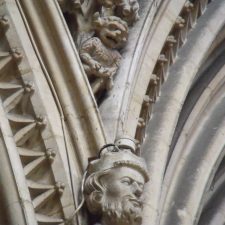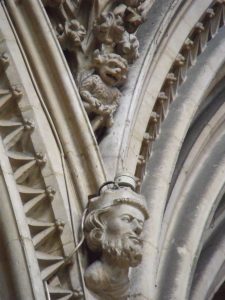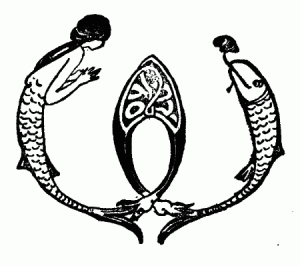The Lincoln Imp

In medieval times it is claimed that the Devil sent a plague of imps to the northern part of the country to cause mischief.
Those imps came first to St. Mary’s church in Chesterfield and amused themselves by twisting the spire.
The imps spread out around the area causing diverse mishaps and irritations.
It was not long before two of them arrived at Lincoln Cathedral, at that time the tallest building in the world.
The imps set about wreaking havock, smashing stained glass windows, knocking the bishop to the floor, blowing out all the candles and upsetting the tables and chairs.
Summoned by the infernal noise, an angel appeared from a bible that had been left open and chastised the imps. One hid in the detritus caused by their vandalism, but the other enboldened imp started throwing stones at its adversary from it’s perch high up in the Angel Choir.
Finally weary of the onslaught, “Wicked Imp, be turned to stone!” proclaimed the angel.
The wizened creature can be seen in his final position to this day.
Of the imp who hid, it is said he escaped and continued to cause mischief around the country until he was finally cornered by the angel in St James’ Church, Grimsby.
The angel soundly thrashed the imp before turning him to stone which is why he can be found clutching his bottom.


 LONGDENDALE has always been noted for the number of its inhabitants devoted to the study of magic arts. Once upon a time, or to give it in the words of an unpublished rhyme (which are quite as indefinite)—
LONGDENDALE has always been noted for the number of its inhabitants devoted to the study of magic arts. Once upon a time, or to give it in the words of an unpublished rhyme (which are quite as indefinite)—



